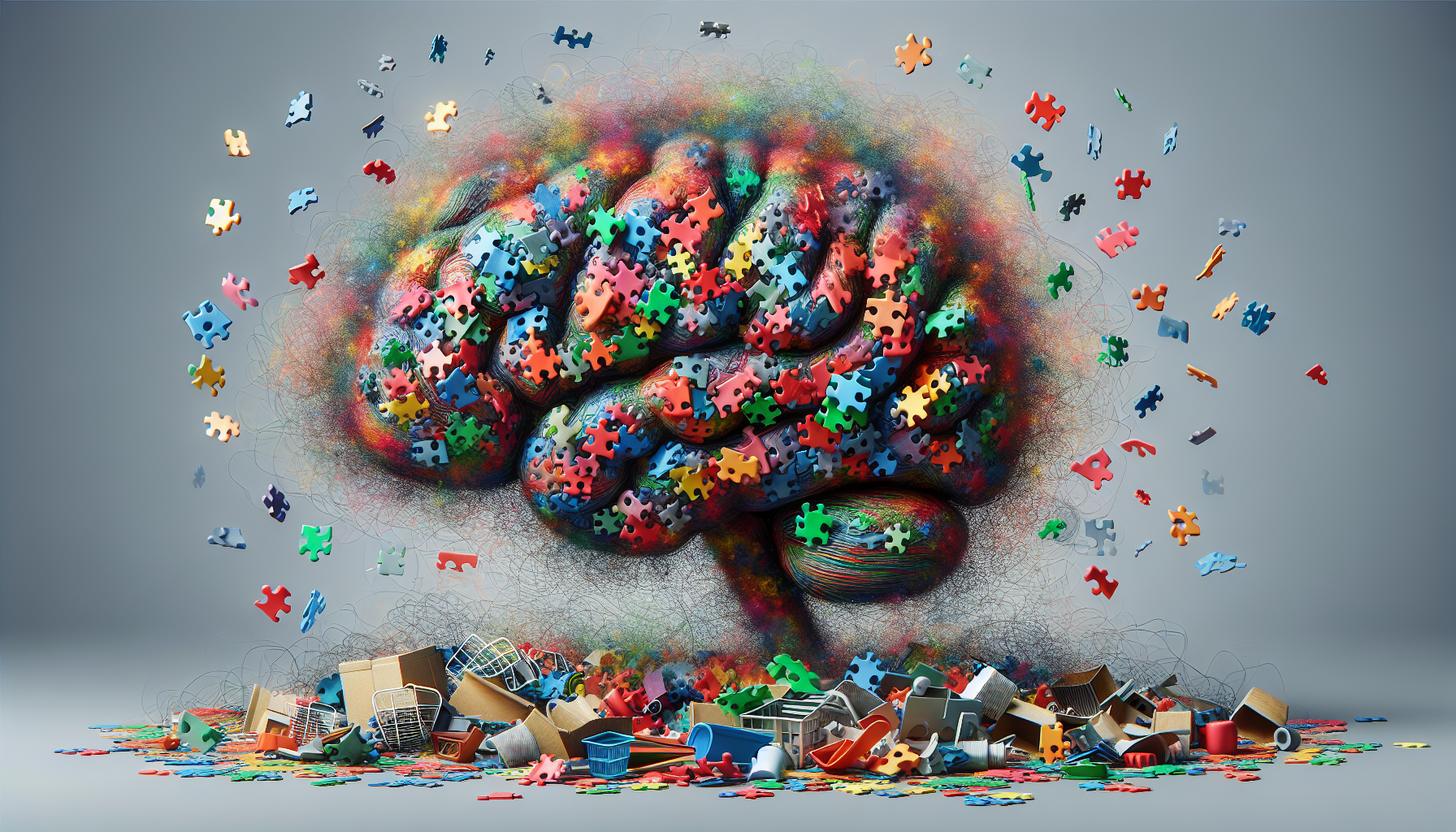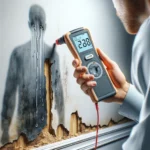Key Takeaways
-
Hoarders suffer from hoarding disorder, a mental health condition causing extreme difficulty in discarding items and significant clutter, which can result in distress and social isolation.
-
Hoarding disorder often co-occurs with other mental health issues and is linked to emotional attachments to possession, information processing deficits, and can be influenced by genetic, personal, and socioeconomic factors.
-
Effective treatments for hoarding disorder include Cognitive Behavioral Therapy, medication for related conditions, and support from family and friends, with progress relying on individual coping strategies and ongoing support.
Defining Hoarders: Who Are They?

Hoarding disorder is a mental health condition that manifests as an intense need to save a vast array of items, regardless of their value, and significant distress associated with the thought of discarding these items. This behavior, known as compulsive hoarding, is distinct from that of collectors, who acquire and organize items in a purposeful manner, often with the aim of display or resale.
To unravel the complexities of hoarding disorder, it’s helpful to grasp the unique challenges it presents for those affected and the impact it can have on their families.
Symptoms of Hoarding Disorder

At the heart of hoarding disorder is the excessive accumulation of items, leading to cluttered living spaces that may even extend to garages, vehicles, or yards. Individuals with this disorder experience persistent difficulty in discarding possessions, regardless of their value, often feeling distress at the thought of getting rid of items. The resulting clutter from hoarding can disrupt daily living, making rooms unusable for their intended purpose, and lead to social isolation as individuals avoid having visitors. Recognizing hoarding symptoms is crucial for addressing the issue and seeking appropriate help.
Adding to the disorder’s severity, many individuals with hoarding disorder often fail to recognize their behavior as problematic, leading them to continue acquiring more items.
The Psychology Behind Hoarding
Hoarding is not a mere eccentricity, but an anxiety disorder characterized by the inability to discard items, leading to extreme accumulation and distress. It is often accompanied by other mental health issues such as mental disorders like:
-
depression
-
ADHD
-
anxiety disorders
-
alcohol use disorder
While hoarding disorder is classified within the obsessive compulsive disorder spectrum, it is recognized as a distinct condition, with a significant proportion of people with hoarding disorder also having a mood or anxiety disorder.
Emotional Attachment to Possessions

One of the key elements that fuels hoarding behavior is the emotional attachment formed to items. Many individuals with hoarding disorder feel safer or comforted by their possessions, experiencing a fear of wasting anything. This sense of comfort and safety can make it exceedingly difficult to discard items.
Moreover, items may serve as reminders of happier times or represent beloved people or pets, further intensifying the emotional ties to these objects.
Information Processing Deficits

Beyond emotional attachments, individuals with hoarding disorder often grapple with information processing deficits. These individuals tend to have greater difficulty with executive functioning, which includes impaired decision-making and issues with categorization and organization. They experience difficulty making decisions, particularly when it comes to whether to keep or discard items.
Problems with attention and problem-solving are common in individuals with this disorder, contributing to their challenges in organizing possessions.
Risk Factors for Developing Hoarding Disorder
Comprehending the risk factors can shed light on who is more likely to develop hoarding disorder. Symptoms typically begin between ages 15 to 24 and worsen progressively with age, often becoming prominent around 55 years and older. Genetic factors also play a significant role in hoarding disorder, as indicated by studies showing up to 50% heritability and a higher likelihood of the disorder among those with family members affected.
Moreover, experiencing traumatic events such as the death of a loved one, divorce, or personal loss can trigger or heighten hoarding behaviors. Surprisingly, individuals with lower socioeconomic status are also more prone to hoarding behaviors.
Animal Hoarding: A Distinct Form of Hoarding

While most hoarding behavior involves inanimate objects, there’s a subset known as animal hoarding, which includes those who hoard animals. This refers to individuals accumulating a large number of pets without the ability to properly care for them, creating unsanitary conditions and endangering the health and safety of both the individual and the animals. The practice of animal hoarding can lead to severe consequences, including animal cruelty, suffering, and severe neglect of tens of thousands of animals, particularly cats and dogs.
The psychological factors underpinning animal hoarding include:
-
Possible delusional beliefs
-
Strong perceived responsibilities to protect animals
-
Traumatic childhood experiences
-
Difficulty forming human relationships
Distinguishing features of animal hoarding from other hoarding types include a lack of insight, as the animal hoarder often does not recognize the harm inflicted on themselves or the animals.
Diagnosing Hoarding Disorder
The recognition and diagnosis of hoarding disorder is a pivotal step on the road to recovery. It is a recognized mental health condition in the Diagnostic and Statistical Manual (DSM-5), characterized by difficulty discarding items, leading to distress and impairment. To diagnose this disorder, mental health professionals conduct a thorough assessment which includes conducting mental health exams and interviewing for behavioral patterns related to acquiring and saving items. Diagnostic evaluation may use tools like the Structured Interview for Hoarding Disorder, Clutter Image Rating, Saving Inventory-revised, and Hoarding Rating Scale-Interview.
The diagnostic process also considers the impact of clutter on quality of life and additional mental health symptoms such as:
-
Indecisiveness
-
Perfectionism
-
Procrastination
-
Disorganization
-
Distraction
Treatment Options for Hoarding Disorder
Embarking on the journey to recovery is intricate, with several treatment options available, each designed to target different facets of hoarding behavior and its root causes. Treatments include Cognitive Behavioral Therapy (CBT), medication for co-occurring conditions, and support from family and friends.
Cognitive Behavioral Therapy (CBT)
Cognitive behavior therapy serves as a primary treatment for hoarding disorder, significantly reducing symptom severity, particularly when it comes to discarding items. CBT treatment leads to improvements in various symptoms of hoarding disorder such as clutter, difficulty discarding, and the tendency to acquire new items.
An increase in the number of CBT sessions and home visits correlates with enhanced treatment effectiveness for hoarding disorder. However, despite its overall effectiveness, CBT does not always lead to clinically significant changes, and many patients still display hoarding behaviors comparable to hoarding disorder after treatment.
Medication
Although no medications are currently FDA-approved to treat hoarding disorder, prescriptions can be given for associated conditions such as anxiety and depression. Selective serotonin reuptake inhibitors (SSRIs) are commonly used for this purpose.
This highlights the importance of a comprehensive approach to treatment, addressing not just the hoarding behaviors but also any co-occurring other mental health conditions that could exacerbate the disorder, as suggested by the American Psychiatric Association. Consulting a mental health professional can be a crucial step in this process.
Support Groups and Family Involvement
Support from family, friends, and groups can be a lifeline for those grappling with hoarding disorder. For children with hoarding disorder, parental involvement is crucial for managing the behavior and can be guided by professionals. Collaborative family efforts in treating hoarding disorder significantly improve intervention outcomes.
Family members offer essential emotional support during clear-out interventions, contributing to compassionate management with the help of authorities. They also play a key role in ongoing support post clear-out, encouraging individuals to seek additional help for their hoarding behaviors.
Tips for Helping a Loved One with Hoarding Disorder
Supporting a loved one with hoarding disorder can present both challenges and emotional stress. However, there are effective strategies that can help. One of the most crucial steps is to educate oneself about hoarding disorder to foster understanding and trust, showing empathy for the individual’s challenges.
When discussing a loved one’s possessions, use their own language to refer to items, recognizing their emotional attachment and identity beyond the disorder. Improving family communication about hoarding issues by conversing openly and respectfully, and by highlighting the importance of safety, can also be beneficial.
Coping Strategies for Individuals with Hoarding Disorder
Adopting coping strategies can significantly assist individuals dealing with hoarding disorder in managing their behavior. Here are some strategies to consider:
-
Start with small and approachable goals, such as decluttering a specific area like a drawer.
-
Schedule regular sessions to address these tasks, which can prevent feelings of being overwhelmed.
-
Use the ‘OHIO’ (Only Handle It Once) rule to streamline the process of decluttering. This rule urges immediate action to keep, discard, or donate items, thereby enhancing decision-making capabilities.
These strategies can help individuals with hoarding disorder take control of their behavior and create a more organized living space.
Mindfulness practices encourage living in the present moment, reducing distress about past or future concerns, while keeping a diary aids in recognizing and managing behavior triggers, such as stress-related shopping. Building a support network with friends, family, or support groups, and understanding that setbacks are a normal part of recovery, can offer the motive force and perspective needed to maintain progress.
Summary
Hoarding disorder, characterized by the excessive accumulation of items and difficulty discarding them, is a complex mental health condition that affects not only the individuals struggling with it but also their families and loved ones. However, understanding the intricacies of this disorder, from its symptoms to the psychological factors behind it, can foster empathy and facilitate effective intervention. Treatment options like Cognitive Behavioral Therapy, medication for co-occurring conditions, and support groups offer hope for those battling hoarding disorder.
Frequently Asked Questions
What are 3 symptoms of hoarding disorder?
Common symptoms of hoarding disorder include difficulty discarding items, excessive clutter in living spaces, and significant distress or impairment caused by the hoarding behavior. It is important to seek professional help for proper diagnosis and treatment.
What causes someone to be a hoarder?
Hoarders may gather excessive items due to beliefs that those items will be valuable in the future, have sentimental value, or are too good to throw away. Other potential causes include stress, genetics, altered brain connections, and past experiences like loss or poverty.
Is hoarding an anxiety disorder?
Yes, hoarding disorder is classified as part of the obsessive-compulsive disorder (OCD) spectrum, which is an anxiety disorder. Hoarding disorder is a distinct condition.
What makes a person a hoarder?
People with hoarding disorder persistently struggle to part with possessions, experiencing distress at the thought of discarding items and accumulating a large number of belongings, regardless of their value. Childhood experiences, difficulty organizing items, and distress when attempting to discard possessions can contribute to hoarding behavior.
What distinguishes hoarding disorder from collecting?
The key distinction between hoarding disorder and collecting is that collectors purposefully acquire and organize items for display or resale, while individuals with hoarding disorder experience distress when discarding items, leading to cluttered living spaces.



